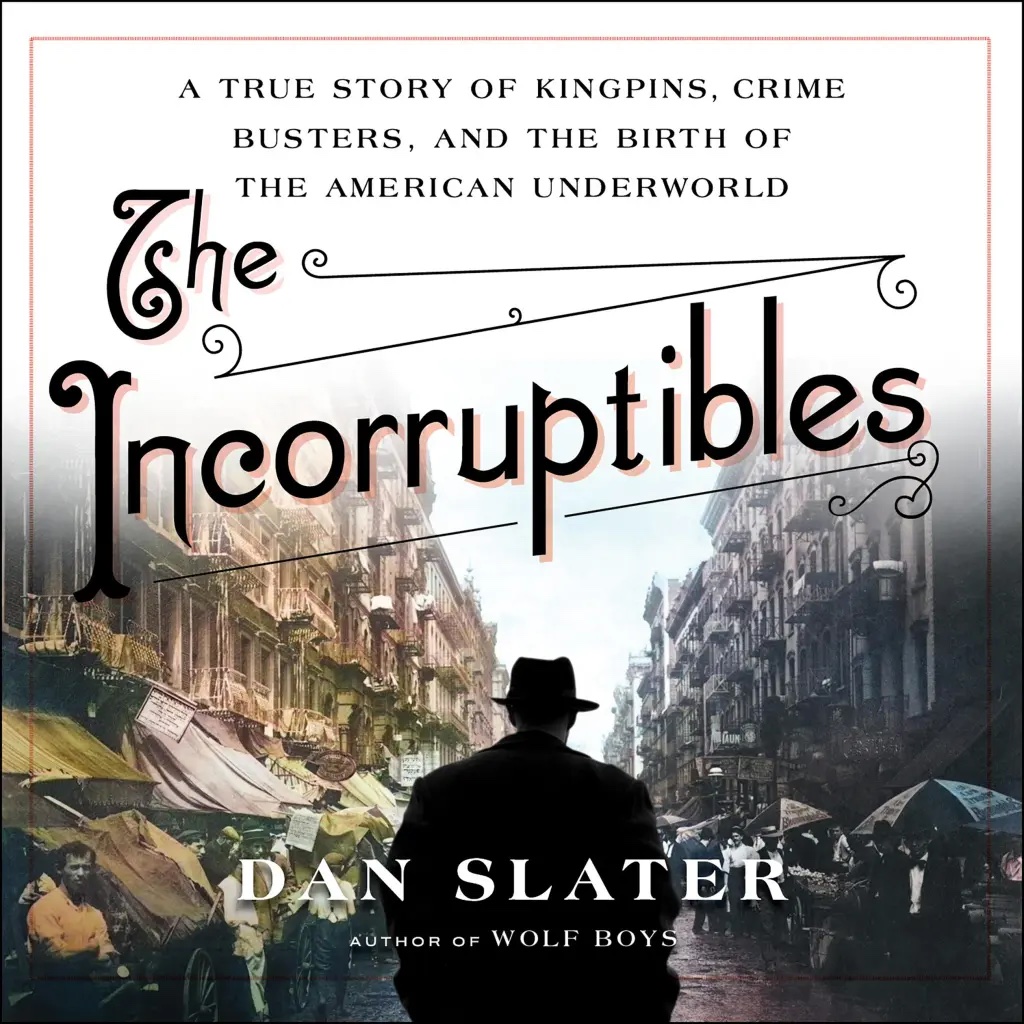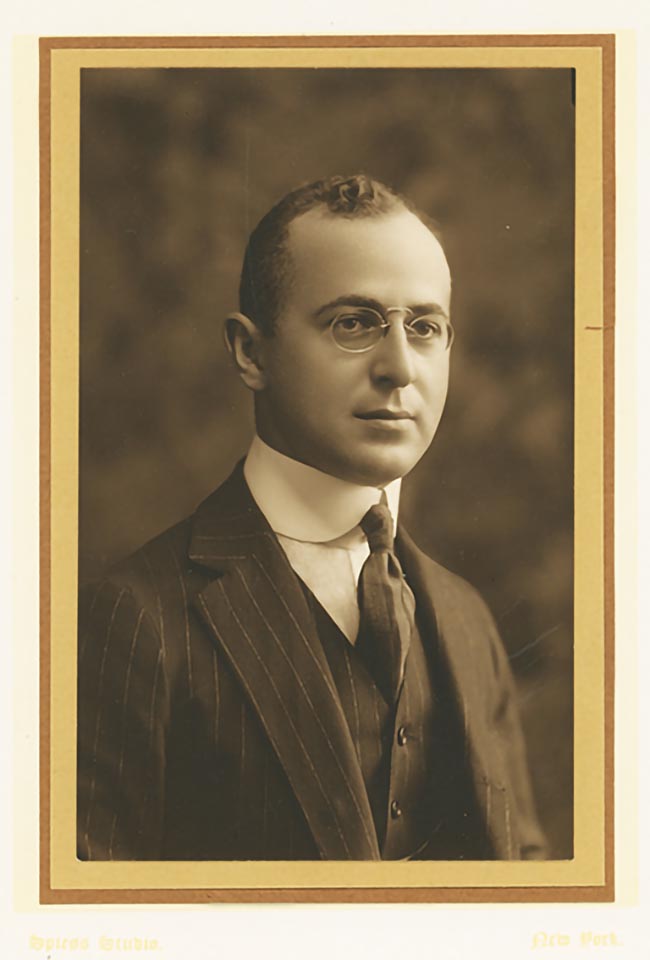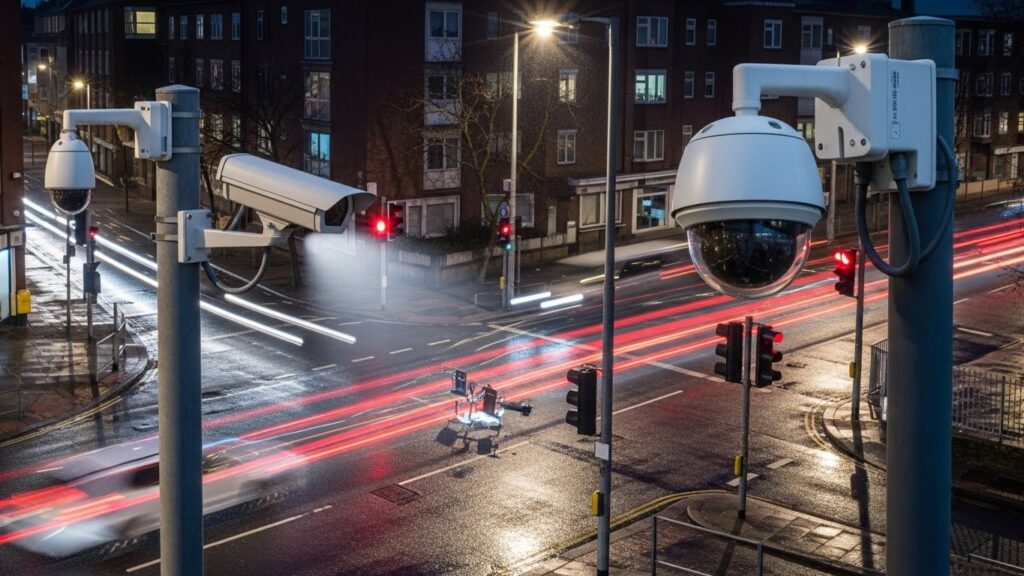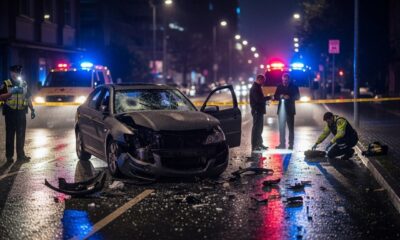Features
New book looks at the fight by law-abiding Jews to rein in the New York Jewish underworld in early 20th century

The Incorruptibles: A True Story of Kingpins, Crime Busters, and the Birth of the American Underworld
Reviewed by BERNIE BELLAN For those readers who can remember the story of “The Untouchables,” the crime-fighting unit led by Elliot Ness, which was established by the Bureau of Prohibition in the US in the 1930s, tales of shoot-outs between courageous crime-fighting “good guys” and villainous underworld bootleggers and other assorted criminals would probably be thought of as something that wouldn’t have its origin in a Jewish-led crime-fighting unit established several years earlier.

But, would you believe that not too many years before the often bloody events that were depicted in “The Untouchables” came to pass there was another organization in New York City – led by Jewish crime fighters at that time, which had a somewhat tacit affiliation with the New York City Police Department, and whose purpose was to wage war on Jewish criminals on New York’s East Side? That organization was known as “The Incorruptibles” and the story how it came to be created is told in a fascinating new book, titled “The Incorruptibles: A True Story of Kingpins, Crime Busters, and the Birth of the American Underworld,” written by a New York crime reporter by the name of Dan Slater.
As someone who has long had a fascination with shady Jewish characters, I’ve come to realize over the years that a rollicking good story of a Jewish mobster, such as the close friendship a former Winnipegger by the name of Al Smiley had with the notorious Bugsy Siegel, about which Martin Zeilig wrote for The Jewish Post & News in March 2017, resonates with readers in ways that stories about more righteous Jews don’t.
While Martin’s story about Al Smiley was by no means the first story we’ve ever had about Jewish mobsters, a quick search of our online archive would lead you to numerous stories about Jewish gangsters and other assorted criminals.
In the summer of 2023 we ran two stories in relatively rapid succession that elicited a higher than usual amount of interest from readers. One was my review of a book called “Jukebox Empire,” about someone by the name of Wilf Rabin, who actually grew up in Morden, Manitoba. The other story was about bootlegger Bill Wolchock, written by Bill Redekopp, and which appeared in our 2023 Rosh Hashanah edition. Later, when I posted that story to our website it received so many views that I’ve returned it to our home page twice since. (You can now read that story if you missed it by reading it here: “Booze, Glorious Booze”
All this serves as a preamble to my review of “The Incorruptibles.” I have to couch what I’m about to write with an admission: As a youngster growing up in a sheltered environment, and attending the Talmud Torah, where all we were ever told about was Jewish “heroes,” and the only villains were Jews who didn’t lead properly observant lives, reading “The Incorruptibles” came as a real shock to my conception of how much Jews could be associated with the most sordid type of criminal activity.
It’s one thing to realize that many Jews were involved with bootlegging – something that has developed an almost romantic connotation over the years through books, movies and television programs, but to learn that in the latter part of the 19th century Jews in New York were in control of that city’s: prostitution (and most prostitutes were Jewish!); drugs (however, with the understanding that drugs, including heroin and cocaine, were legally available in the U.S. until 1907 and could be readily purchased in pharmacies); gambling; and protection rackets – does come as somewhat of a shock to a sheltered Winnipeg Jew.
Dan Slater’s depiction of life in New York City at the turn of the 20th century is unremittingly harrowing. For the first part of the 20th century the lower East Side of New York was the most densely populated area on Earth. Housing conditions were horrible and the hundreds of thousands of new immigrants arriving yearly – beginning in the 1870s, from what was known as the Pale of Settlement in Eastern Europe – fleeing persecution and pogroms, found themselves being shunted into unspeakably barbaric working conditions in lower East Side factories, predominantly garment factories – owned by fellow Jews. (The author actually spends a considerable amount of time explaining how exactly the Pale of Settlement came into being and how sudden and incredibly violent wholesale persecution of hundreds of thousands of Jews could happen almost overnight – with the death of a particular czar, for instance.)
It was amidst this churning cesspool of a city that Jewish criminal activity of all sorts ran rampant. Two images from “The Incorruptibles” in particular haunted me. One was Slater’s explanation how so many young Russian Jewish women – most in their early or mid-teens, and only recently arrived in New York, were forced into prostitution. Many of these young women would go to a dance – looking to find some relief from the slave-like conditions that permeated the factories in which they worked. While at the dance, they would be approached by a young Jewish man who would offer them a drink. These guys, known in the colloquial as “Alphonses,” or, in Yiddish, as “schimchas,” would lace the girls’ drinks with drugs (a common occurrence to this day) and take the girls home, where they would rape them. But – now defiled, the girl could not possibly return to her family home out of shame; thus, tens of thousands of young Jewish women were forced into prostitution.
The other image that haunts me was the widespread practice of “horse poisoning.” Protection rackets have probably been around from time immemorial, but in this particular incarnation, criminals would confront business owners with a choice: Pay for “protection” or see your means of transportation (and remember, this was at a time when a horse-drawn buggy or carriage was the principal means of transportation) poisoned.
(There is actually a photo in “The Incorruptibles” of a horse lying dead on a New York street after it had been poisoned. Apparently it happened on a regular basis to the point where it didn’t draw much attention.)

While the book chronicles one sordid story after another so that the reader can understand just how tough life was on the lower East Side – often with reference to the colourful names of some of the most famous Jewish thugs who terrorized their fellow Jews, such as “Bald Jack Rose” or “Big Jack Zelig” (no relation to Martin Zelig – I checked), the biggest mobster of them all was the legendary Arnold Rothstein.
Rothstein is undoubtedly most famous for reputedly having fixed the 1919 World Series by bribing eight members of the Chicago White Sox, the overwhelming favourite to defeat the Cincinnati Reds, to throw the series. (It has never been proven absolutely conclusively that Rothstein did that, but as “The Incorruptibles” explains, the evidence points overwhelmingly in his direction.)
Rothstein was the kind of gambler who could lose $350,000 in a single night of playing poker – and not worry about it.
Here is an example of Slater’s ability to describe a character, when he sums up Arnold Rothstein: “Picture in one individual a sentimental and tender lover, a genial and humorous companion, a charitable giver, a loyal friend—and—a wholesale drug dealer, a crooked sports fixer, a welching gambler, a stolen securities fence, a rum-ring mastermind, a corrupter of police, a grafter through politics, a gunman, a judge-briber, a jury-tamperer, a blackmailer, a pool shark, a swindler.”

But, up against the villains of “The Incorruptibles,” Slater also depicts the stories of two very talented – and brave, young Jewish men, who were willing to challenge the criminal class: A lawyer by the name of Harry Newburger and Abe Shoenfeld, the son of a well-known New York reformer by the name of Mayer Shoenfeld.
As Slater explains, it was only when members of New York’s largely German-Jewish upper class began to take note of the horrid conditions in which the vast majority of the Eastern European Jews who had recently immigrated to America were living did an impetus to try and change things develop. Two men, Jacob Schiff (who is described as the J.P. Morgan of his day in terms of his vast wealth), and Felix Warburg, together with the rabbi of the leading temple of its day, Rabbi Judah Magnes of Temple Immanu-El, organized a group known as the “Kehilah.”
The Kehilah mandated Newburger and Shoenfeld to do whatever they deemed necessary to begin cleaning up the lower East Side. Of course, given how corrupt New York officials were at the time – under the control of the notorious Tammany Hall, led by “Big Jim Sullivan,” most of the New York City Police Department was also thoroughly under the control of criminals, which made the challenge set out for Newburger and Shoenfeld all the more difficult.
The book describes, sometimes in painful detail, the difficulties faced by the group assembled by Newburger and Shoenfeld, known, naturally, as “The Incorruptibles.” They weren’t above busting heads themselves, it turns out.
Again, one of the more interesting aspects of history to emerge from this book is that men would often switch sides at the drop of a hat – to go from violently attacking one particular group – at the behest of this or that mobster, to attacking the same group they were supposed to be defending the next day.
As has already been noted, the garment trade played a pivotal role in the development of New York City into becoming not only a magnet for immigrants, it also also played a prominent role in New York’s becoming the vast economic powerhouse that it is today. Slater notes that, at one point, 80 percent of all garments produced in the U.S. came from the lower East Side.
As workers began to organize themselves into unions, garment factory owners hired thugs, known as “shtarkers” (strong men) to beat up workers, occasionally to kill union organizers. In time though, the tide began to turn and, as unions gathered strength, the same tactics of violence and intimidation that had been used against workers began to be employed by unions – with workers who dared to cross picket lines (known colloquially as “scabs”) often being on the receiving end of that violence, occasionally ending with them being killed.
Newburger and Shoenfeld were thrust into the midst of this turmoil, trying to bring some peace to the labour disputes. Ironically, Mayer Shoenfeld (Abe’s father) was a longtime advocate for workers’ rights, but he would not talk to his son, who tried to straddle both worlds – of employers and employees.
“The Incorruptibles” describes the many battles fought to rein in the gambling, prostitution, protection rackets, and what became the illegal drug trade that were part and parcel of life on New York’s East Side. As the years went by, the Jewish dominance of the New York underworld gave way to the ascendance of the Italian mob. (Slater also acknowledges the roles that other groups also played in New York criminal activity, including the Irish), but his main focus is on Jewish criminals.
“The Incorruptibles” is a long and detailed book, drawing upon a great many different sources, and at times, the proliferation of names entering the scene can be more than a little confusing. But, for anyone who has an interest in reading something that peels back the layers of a very disturbing aspect of Jewish history that might not fit all that well with the notion of Jewish righteousness, then “The Incorruptibles” might be of interest.
“The Incorruptibles: A True Story of Kingpins, Crime Busters, and the Birth of the American Underworld”
By Dan Slater
432 pages
Published by Little, Brown and Company, 2024
Features
How Hit And Run Accidents Highlight The Need For Stronger Road Safety Measures

A sudden impact followed by the screech of tires fading into silence leaves a person in a state of shock and confusion. These incidents occur across modern road networks and can profoundly affect victims, especially when the responsible party leaves without rendering aid.
Why does this behavior persist despite modern surveillance technology and increased legal penalties? These incidents highlight gaps in infrastructure and the need for stronger safety protocols to better protect vulnerable road users and improve accountability.
What Role Does Infrastructure Play In Preventing Driver Flight?
Designing roads that naturally encourage slower speeds and higher visibility can significantly reduce the likelihood of a driver attempting to flee. Proper engineering promotes lower speeds and better visibility, supporting safer behavior and easier incident documentation.
Improving Street Lighting Systems
Visibility is a primary factor in both accident prevention and suspect identification. Bright, well‑placed LED lighting can improve visibility for witnesses and cameras, making identification more feasible at night.
Implementing Traffic Calming Measures
Speed humps, roundabouts, and narrowed lanes are associated with lower speeds in pedestrian‑heavy areas. When vehicles move more slowly, impact severity tends to decrease, and immediate flight becomes more difficult.
Expanding Automated Enforcement Cameras
License plate recognition technology acts as a silent sentry on busy intersections. These systems can furnish critical investigative leads, increasing the likelihood of identifying vehicles involved in recorded incidents.
Why Do Hit-and-Run Incidents Increase Despite Modern Technology?
Even with expanded surveillance in many areas, some drivers believe they can avoid consequences after a collision. In cities like Charlotte, where traffic crashes rose by 9 percent in 2025, the psychological urge to flee often overrides logic when panic or impairment sets in. Practitioners frequently observe cases where split-second decisions lead to prolonged legal proceedings, underscoring that technology can aid investigations but does not always prevent offenses. A Charlotte hit-and-run accident lawyer reconciling with precision at StewartLawOffices.net provides a way for victims to understand the available legal avenues, as nationwide fatalities have risen significantly over the last decade.
Furthermore, current data suggests that while high-definition cameras capture more incidents, they often lack the immediate deterrent effect needed to stop a driver from leaving the scene in the heat of the moment. This disconnect between surveillance and behavioral prevention highlights a significant gap that technology alone has yet to bridge. Locals in Charlotte, facing such trauma, can visit Stewart Law Offices, located at 2427 Tuckaseegee Road, on 6 minutes drive from 4th Street Ext, near Frazier Park, for a free consultation, or can call 704-521-5000 to seek guidance on their situation.
Which Misconceptions About Hit And Run Investigations Persist?
A common myth is that if there are no witnesses, the driver will never be found. Many believe that “no face, no case” applies to collisions on quiet streets. However, modern forensics and digital footprints tell a very different and more complex story.
Paint transfer, vehicle parts, and other physical evidence can help narrow vehicle make/model and potentially identify suspects when combined with other investigative leads. The idea that a driver can simply disappear into the void is a dangerous fallacy that ignores the complexity of modern investigation techniques and the ubiquity of digital evidence.
How Can Better Public Policy Improve Survival Rates?
Legislative changes can bridge the gap between a collision and life-saving medical intervention. Policies that improve rapid emergency response during the “Golden Hour” can positively influence outcomes for injured parties.
Mandatory Good Samaritan Education
Including basic first aid and emergency reporting in driver education can improve public readiness and may encourage more responsible behavior after collisions.
Enhancing Alert System Integration
Similar to Amber Alerts, “Yellow Alerts” can be broadcast to notify the public about a vehicle involved in a hit and run. This rapid dissemination of information turns every citizen into a potential witness.
Increasing Penalties For Non-Compliance
Sentencing guidelines, higher fines, and license consequences can align penalties with offense severity and may deter some would‑be offenders.

What Practical Steps Should Be Taken Immediately After A Collision?
Safety is the priority. If a vehicle strikes another and flees, move to a secure location if possible. Calling emergency services promptly initiates a report and can expedite medical assistance.
Elizabeth VonCannon, a Charlotte hit and run accident lawyer, emphasizes that documenting the scene with photos of the damage and the surrounding area can provide clues later. Even small details, like the direction the fleeing car headed or the color of its paint, can be the missing piece for law enforcement to find them.
Frequently Asked Questions
Does insurance cover damage if the other driver is never found?
Uninsured motorist coverage may apply to repairs and medical expenses in hit‑and‑run cases, depending on your jurisdiction and policy terms.
What information is most helpful to record after an accident?
Try to note the license plate, vehicle make, model, color, and the direction the driver fled the scene.
Can a driver be charged with a felony for fleeing?
Yes, if the accident involves serious bodily injury or death, the act of fleeing is often classified as a felony.
Features
So, what’s the deal with the honey scene in ‘Marty Supreme?’

By Olivia Haynie December 29, 2025 This story was originally published in the Forward. Click here to get the Forward’s free email newsletters delivered to your inbox.
There are a lot of jarring scenes in Marty Supreme, Josh Safdie’s movie about a young Jew in the 1950s willing to do anything to secure his spot in table tennis history. There’s the one where Marty (Timothée Chalamet) gets spanked with a ping-pong paddle; there’s the one where a gas station explodes. And the one where Marty, naked in a bathtub, falls through the floor of a cheap motel. But the one that everybody online seems to be talking about is a flashback of an Auschwitz story told by Marty’s friend and fellow ping-ponger Béla Kletzki (Géza Röhrig, best known for his role as a Sonderkommando in Son of Saul).
Kletzki tells the unsympathetic ink tycoon Milton Rockwell (Kevin O’Leary) about how the Nazis, impressed by his table tennis skills, spared his life and recruited him to disarm bombs. One day, while grappling with a bomb in the woods, Kletzki stumbled across a honeycomb. He smeared the honey across his body and returned to the camp, where he let his fellow prisoners lick it off his body. The scene is a sensory nightmare, primarily shot in close-ups of wet tongues licking sticky honey off Kletzki’s hairy body. For some, it was also … funny?
Many have reported that the scene has been triggering a lot of laughter in their theaters. My audience in Wilmington, North Carolina, certainly had a good chuckle — with the exception of my mother, who instantly started sobbing. I sat in stunned silence, unsure at first what to make of the sharp turn the film had suddenly taken. One post on X that got nearly 6,000 likes admonished Safdie for his “insane Holocaust joke.” Many users replied that the scene was in no way meant to be funny, with one even calling it “the most sincere scene in the whole movie.”
For me, the scene shows the sheer desperation of those in the concentration camps, as well as the self-sacrifice that was essential to survival. And yet many have interpreted it as merely shock humor.
Laughter could be understood as an inevitable reaction to discomfort and shock at a scene that feels so out of place in what has, up to that point, been a pretty comedic film. The story is sandwiched between Marty’s humorous attempts to embarrass Rockwell and seduce his wife. Viewers may have mistaken the scene as a joke since the film’s opening credits sequence of sperm swimming through fallopian tubes gives the impression you will be watching a comedy interspersed with some tense ping-pong playing.
The reaction could also be part of what some in the movie theater industry are calling the “laugh epidemic.” In The New York Times, Marie Solis explored the inappropriate laughter in movie theaters that seems to be increasingly common. The rise of meme culture and the dissolution of clear genres (Marty Supreme could be categorized as somewhere between drama and comedy), she writes, have primed audiences to laugh at moments that may not have been meant to be funny.
The audience’s inability to process the honey scene as sincere may also be a sign of a society that has become more disconnected from the traumas of the past. It would not be the first time that people, unable to comprehend the horrors of the Holocaust, have instead derided the tales of abuse as pure fiction. But Kletzki’s story is based on the real experiences of Alojzy Ehrlich, a ping-pong player imprisoned at Auschwitz. The scene is not supposed to be humorous trauma porn — Safdie has called it a “beautiful story” about the “camaraderie” found within the camps. It also serves as an important reminder of all that Marty is fighting for.
The events of the film take place only seven years after the Holocaust, and the macabre honey imagery encapsulates the dehumanization the Jews experienced. Marty is motivated not just by a desire to prove himself as an athlete and rise above what his uncle and mother expect of him, but above what the world expects of him as a Jew. His drive to reclaim Jewish pride is further underscored when he brings back a piece of an Egyptian pyramid to his mother, telling her, “We built this.”
Without understanding this background, the honey scene will come off as out of place and ridiculous. And the lengths Marty is willing to go to to make something of himself cannot be fully appreciated. The film’s description on the review-app Letterboxd says Marty Supreme is about one man who “goes to hell and back in pursuit of greatness.” But behind Marty is the story of a whole people who have gone through hell; they too are trying to find their way back.
Olivia Haynie is an editorial fellow at the Forward.
This story was originally published on the Forward.
Features
Paghahambing ng One-on-One Matches at Multiplayer Challenges sa Pusoy in English

Ang Pusoy, na kilala din bilang Chinese Poker, ay patuloy na sumisikat sa buong mundo, kumukuha ng interes ng mga manlalaro mula sa iba’t ibang bansa. Ang mga online platforms ay nagpapadali sa pag-access nito. Ang online version nito ay lubos na nagpasigla ng interes sa mga baguhan at casual players, na nagdulot ng diskusyon kung alin ang mas madali: ang paglalaro ng Pusoy one-on-one o sa multiplayer settings.
Habang nailipat sa digital platforms ang Pusoy, napakahalaga na maunawaan ang mga format nito upang mapahusay ang karanasan sa laro. Malaking epekto ang bilang ng mga kalaban pagdating sa istilo ng laro, antas ng kahirapan, at ang ganap na gameplay dynamics. Ang mga platforms tulad ng GameZone ay nagbibigay ng angkop na espasyo para sa mga manlalaro na masubukan ang parehong one-on-one at multiplayer Pusoy, na akma para sa iba’t ibang klase ng players depende sa kanilang kasanayan at kagustuhan.
Mga Bentahe ng One-on-One Pusoy
Simpleng Gameplay
Sa one-on-one Pusoy in English, dalawa lang ang naglalaban—isang manlalaro at isang kalaban. Dahil dito, mas madali ang bawat laban. Ang pokus ng mga manlalaro ay nakatuon lamang sa kanilang sariling 13 cards at sa mga galaw ng kalaban, kaya’t nababawasan ang pagiging komplikado.
Para sa mga baguhan, ideal ang one-on-one matches upang:
- Sanayin ang tamang pagsasaayos ng cards.
- Matutunan ang tamang ranggo ng bawat kamay.
- Magsanay na maiwasan ang mag-foul sa laro.
Ang simpleng gameplay ay nagbibigay ng matibay na pundasyon para sa mas kumplikadong karanasan sa multiplayer matches.
Mga Estratehiya mula sa Pagmamasid
Sa one-on-one matches, mas madaling maunawaan ang istilo ng kalaban dahil limitado lamang ang galaw na kailangan sundan. Maaari mong obserbahan ang mga sumusunod na patterns:
- Konserbatibong pagkakaayos o agresibong strategy.
- Madalas na pagkakamali o overconfidence.
- Labis na pagtuon sa isang grupo ng cards.
Dahil dito, nagkakaroon ng pagkakataon ang mga manlalaro na isaayos ang kanilang estratehiya upang mas epektibong maka-responde sa galaw ng kalaban, partikular kung maglalaro sa competitive platforms tulad ng GameZone.
Mas Mababang Pressure
Dahil one-on-one lamang ang laban, mababawasan ang mental at emotional stress. Walang ibang kalaban na makaka-distract, na nagbibigay ng pagkakataon para sa mga baguhan na matuto nang walang matinding parusa sa kanilang mga pagkakamali. Nagiging stepping stone ito patungo sa mas dynamic na multiplayer matches.
Ang Hamon ng Multiplayer Pusoy
Mas Komplikado at Mas Malalim na Gameplay
Sa Multiplayer Pusoy, madaragdagan ang bilang ng kalaban, kaya mas nagiging komplikado ang laro. Kailangan kalkulahin ng bawat manlalaro ang galaw ng maraming tao at ang pagkakaayos nila ng cards.
Ang ilang hamon ng multiplayer ay:
- Pagbabalanse ng lakas ng cards sa tatlong grupo.
- Pag-iwas sa labis na peligro habang nagiging kompetitibo.
- Pagtatagumpayan ang lahat ng kalaban nang sabay-sabay.
Ang ganitong klase ng gameplay ay nangangailangan ng maingat na pagpaplano, prediksyon, at strategic na pasensiya.
Mas Malakas na Mental Pressure
Mas mataas ang psychological demand sa multiplayer, dahil mabilis ang galawan at mas mahirap manatiling kalmado sa gitna ng mas maraming kalaban. Kabilang dito ang:
- Bilisan ang pagdedesisyon kahit under pressure.
- Paano mananatiling focused sa gitna ng mga distractions.
- Pagkakaroon ng emosyonal na kontrol matapos ang sunod-sunod na talo.
Mas exciting ito para sa mga manlalarong gusto ng matinding hamon at pagmamalasakit sa estratehiya.
GameZone: Ang Bagong Tahanan ng Modern Pusoy

Ang GameZone online ay isang kahanga-hangang platform para sa mga naglalaro ng Pusoy in English. Nagbibigay ito ng opsyon para sa parehong one-on-one at multiplayer matches, akma para sa kahit anong antas ng kasanayan.
Mga feature ng GameZone:
- Madaling English interface para sa user-friendly na gameplay.
- Real-player matches imbes na kalaban ay bots.
- Mga tool para sa responsible play, tulad ng time reminder at spending limits.
Pagtatagal ng Pamanang Pusoy
Ang Pusoy card game in English ay nagpalawak ng abot nito sa mas maraming players mula sa iba’t ibang bahagi ng mundo habang pinapanatili ang tradisyunal nitong charm. Sa pamamagitan ng mga modernong platform tulad ng GameZone, mananatiling buhay at progresibo ang Pusoy, nakakabighani pa rin sa lahat ng antas ng manlalaro—mula sa casual enjoyment hanggang sa competitive challenges.
Mula sa maingat na pag-aayos ng mga cards hanggang sa pag-master ng estratehiya, ang Pusoy ay isang laro na nananatiling relevant habang ipinapakita ang masalimuot nitong gameplay dynamics na puno ng kultura at inobasyon.



